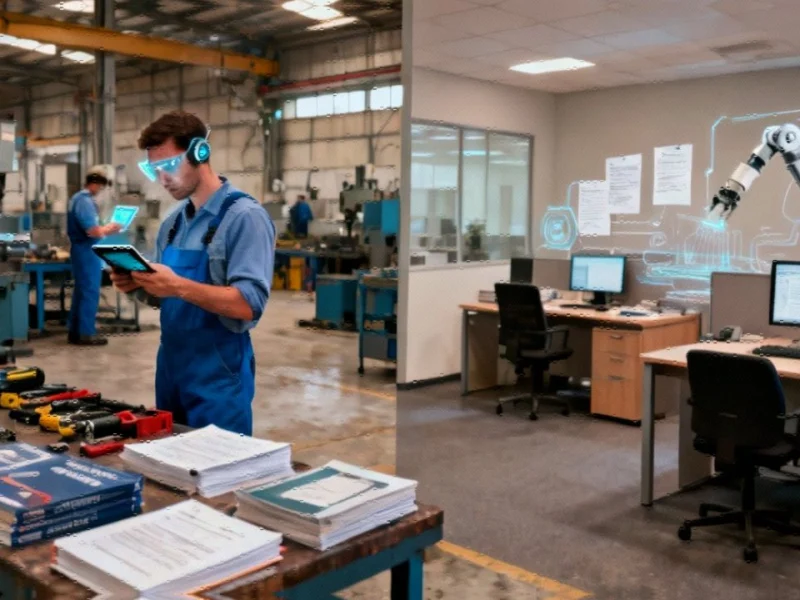According to CNBC, HSBC CEO Georges Elhedery warned at the Global Financial Leaders’ Investment Summit in Hong Kong about a significant mismatch between AI investments and revenues, noting that current revenue profiles may not justify massive spending on computing power. Morgan Stanley estimates global data center capacity will grow six times over five years, with data centers and hardware alone costing $3 trillion by 2028, while McKinsey research projects AI-capable data centers will require $5.2 trillion in capital expenditure by 2030. General Atlantic CEO William Ford agreed, describing AI as a “10-, 20-year play” while warning of potential “misallocation of capital, destruction, overvaluation… and irrational exuberance” in initial stages. Big Tech firms now collectively expect capital expenditures to exceed $380 billion this year, with OpenAI announcing roughly $1 trillion in infrastructure deals with partners including Nvidia, Oracle and Broadcom. This massive investment surge raises fundamental questions about AI’s economic viability.
The Classic Infrastructure Dilemma Revisited
What we’re witnessing with AI investment patterns mirrors historical infrastructure booms where capital outlays precede revenue generation by years, sometimes decades. The railroad expansion of the 19th century and electricity grid development in the early 20th century followed similar trajectories – massive upfront investment with uncertain returns. Companies building these foundational technologies often went bankrupt before seeing profitability, yet the infrastructure they built enabled entirely new economic ecosystems. The critical difference today is the unprecedented speed of deployment and the concentration of investment among a handful of tech giants who can afford to absorb losses that would bankrupt smaller players.
The Revenue Recognition Challenge
The fundamental problem facing AI investors isn’t technological capability but economic viability. While companies can clearly demonstrate AI’s potential to improve productivity, translating that into direct revenue streams remains elusive. Most enterprise AI implementations today function as cost centers rather than profit centers, with benefits appearing as operational efficiencies rather than new revenue lines. This creates a valuation paradox where companies must justify massive capital expenditures against uncertain monetization timelines. The situation is compounded by the fact that many AI applications are becoming commoditized faster than expected, with open-source alternatives and cloud-based services reducing the premium that proprietary solutions can command.
Separating Winners from Losers
As Ford correctly noted, picking winners and losers in this environment is exceptionally difficult. The companies best positioned aren’t necessarily those developing the most advanced AI models, but those controlling the infrastructure layer – the semiconductor manufacturers, cloud providers, and energy companies powering the compute revolution. Morgan Stanley’s analysis of data center growth highlights how the real value capture may occur several layers removed from the application developers. We’re likely to see a repeat of the dot-com era pattern where infrastructure providers like Cisco and Oracle profited handsomely while many application companies struggled to find sustainable business models.
The Realistic Investment Horizon
The 5-10 year timeline mentioned by both executives aligns with historical technology adoption curves but conflicts with modern investment expectations shaped by rapid digital transformations. The disconnect between investor patience and technological reality creates significant market risk. Companies facing quarterly earnings pressure may struggle to maintain the consistent investment required while waiting for returns. This dynamic favors well-capitalized tech giants who can absorb years of negative ROI while smaller players face existential pressure to demonstrate near-term results. The coming years will likely see a shakeout where companies that overestimated near-term revenue potential face difficult restructuring decisions.
Emerging Regulatory and Market Implications
The concentration of AI investment among a few dominant players raises significant competition concerns that regulators are only beginning to address. As capital requirements escalate, barriers to entry become increasingly insurmountable, potentially stifling innovation from smaller players. We’re likely to see increased regulatory scrutiny around AI infrastructure dominance, similar to historical interventions in telecommunications and energy markets. Additionally, the environmental impact of massive data center expansion will inevitably draw regulatory attention, particularly regarding energy consumption and water usage for cooling systems.
Strategic Outlook for the Next Decade
The current investment surge represents a necessary but risky bet on AI’s transformative potential. While some degree of “irrational exuberance” is inevitable in technological revolutions, the scale of current commitments suggests this isn’t a passing trend but a fundamental restructuring of computing infrastructure. The companies that succeed will be those with both the financial endurance to wait for returns and the strategic vision to identify sustainable business models beyond initial hype. As with previous infrastructure revolutions, the ultimate winners may not be the most visible innovators but the most patient and strategically positioned infrastructure providers.




